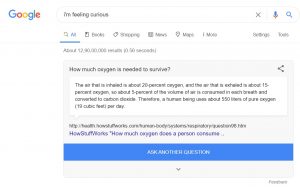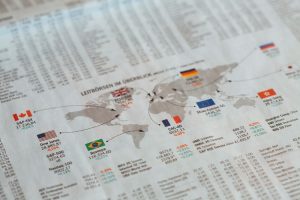Data, or big data, now fuels every industry. And why shouldn’t it? When armed with the right information and machine learning algorithms to analyze it all, businesses can make an unprecedented number of successful decisions.
Data can provide information about a company’s customers, market trends, upcoming events, potential ventures, and so much more. It’s no stretch to claim that it can help a business, big or small, grow its efforts. The biggest problem, however, is knowing and understanding how to leverage the information.
The Basics of Big Data
Before you can ascertain how big data will help your business, you need to be sure you understand the ins and outs. It may seem silly to cover the basics, but it’s crucial nonetheless.
What Is Big Data?
“Big data refers to a massive trove of digital content or information, generally collected from a wide variety of sources. You’ve heard before that knowledge is power, and that’s absolutely true with big data.”
Marketers, analyst firms, businesses, and many others use the information contained within big data stores to understand current events and take action. A major retailer, for example, might be collecting lots of information on how customers are making purchases, such as when, where, and what they are buying. Collectively, this information creates a big data store.
Where Does It Come From?
Big data can come from almost anywhere, including smartphones, computers, satellites, microphones, cameras, public devices, and much more. It is gathered and then stored remotely, usually in what’s called a server center, which is a large facility that houses remote servers to store, analyze, and transmit data.
Many companies will leverage data not just to make informed decisions, but also to generate revenue. Some will sell data to third parties or other businesses, and others will sell the insights that were discovered after scouring through the data they own.
How to Use Big Data for Your Business
How and when you should be leveraging big data depends on several factors:
- What is your business’s focus?
- What kind of data are you collecting?
- How are you analyzing the data?
- What are you looking for?
For example, retailers are going to be collecting and using data differently than a manufacturer or a marketer. Sure, there may be overlap in terms of what the different parties are collecting, but how it will be leveraged is the real differentiator.
There are exceptions, but a retailer is almost always looking for ways to improve their customer install base, improve product offerings or inventory, or improve the bottom line. Manufacturers, on the other hand, might be looking at inventory and performance, but they’re also interested in market trends, the supply chain, new product opportunities, and much more.
Priority number one should always be to choose a single focus for big data campaigns. You may be collecting more data than is necessary to achieve your goal, and that’s okay, but ultimately there is always a target.
Are you looking to improve customer satisfaction? Do you want to grow your audience? Are you trying to discern new product or inventory ideas?
Once you know what you’re doing with, you can start homing in on the right information, which is key, because big data truly is “big” data.
Tips for Leveraging the Data (and Insights)
Data can reveal a lot about a business’s performance, customers, and inventory, and it can also help teams discover where to go next, largely through predictive analytics. Whatever the case, here are some surefire ways to leverage the data, in the interest of growing your business:
1. Build a Map of Your Business
Creating visualizations is an excellent way to understand data, particularly when it comes to geographical or location-based insights. Mapping out business information can be literal, or it can be figurative. In some cases, you are physically mapping data points. In others, you’re merely looking for an overview of patterns or datasets.
For example, you might map out customers locally to understand where they are and where they’re coming from. On another map, you might pinpoint facilities where supplies are coming from and how long it takes to reach your inventory. Further still, you might be looking at where your business — or local stores — influences sales, marketing, or exposure.
2. Improve Customer Experience
By collecting various insights about the customer experience, you can better understand how your customers feel or what they might suggest regarding improvements. Maybe bounce rates on your website are high, indicating that customers are leaving quickly and not spending much time there.
Or, imagine one local store is losing business rapidly. You could analyze data to understand why. Perhaps there’s a competitor that opened nearby. Maybe the customer experience in that store is poor or ineffective. Maybe it’s just a bad location for that kind of business.
Either way, the information can help you improve the customer experience in-store or online.
3. Optimize Marketing Efforts
When you or your marketing team are coming up with a new campaign, many insights influence its development. Customer demographics can tell you who you’re targeting and what kind of message you should be putting out. Product or inventory performance can tell you what goods are popular and which are not.
Even details about your competitors can tell you a lot, like what kinds of campaigns fail, which succeed, and whether or not your rivals are realizing profits. Maybe they came out with a new product or targeted the wrong demographic and their efforts failed. You know to avoid such measures going forward, at least if you planned to use the same strategies.
4. Personalize Experiences
“Knowing what your customers like, which products are their favorites, and what they’re using them for can help you personalize their experiences.”
Amazon and Netflix both use systems like this to offer improved experiences for their customers. Amazon might use it to deliver personalized product suggestions, for instance, whereas Netflix uses the information to suggest new content users might want to watch.
The ultimate goal is to improve the experience for the customer and tastefully tailor what they’re seeing or feeling through the personal information you’ve gathered.
Some 71% of customers get frustrated when a shopping experience is impersonal. You can see just how important personalization is to the average consumer.
5. Attract New Customers
For every business, bringing in new customers and growing the bottom line is the ultimate goal. Unfortunately, it’s difficult identifying how to target them. Even if you discover a new audience, you’ll need to find ways to engage with them.
This is precisely where big data comes into play. You can collect and analyze information to learn who they are, what their interests are, what they spend money on, and much more. This allows you to tailor a campaign specifically to them, hopefully resulting in a much higher ROI or onboarding percentage.
Data-driven organizations are 23 times more likely to acquire customers than those that are not.
6. Find a New Plan of Attack
Eventually, no matter how successful a product or strategy is, it’s going to lose momentum. This is why the most successful businesses are always pivoting somehow.
Companies like Apple, Amazon, Google, and many others are always introducing new and innovative products or services, alongside iterative releases of their most popular products. This is how they continue building that momentum, by not only improving existing and popular offerings but also coming up with new ones.
Data can help you explore new opportunities and may even give you an idea of how well they might perform.
7. Engage With New Channels
Big data isn’t just for collecting, analyzing, and learning. It’s also for taking action. It’s about using discoveries and insights to make sweeping decisions or come up with a new gameplan. One such plan is to identify which communication and marketing channels are best for your business. You must explore everything from social media and email to text messaging or physical marketing.
Because new opportunities are always cropping up, it’s important to factor them into your search and discovery process. TikTok, for instance, has become incredibly popular with younger audiences. Discord, Zoom, Caffeine, Lasso, and Houseparty are also superb examples.
Big data can help identify and leverage these channels by exploring which ones your customers, partners, and competitors are using most.
8. Understand Your Competition
It’s already been said that you can use competitor performance and campaign details to fine-tune your marketing efforts. However, you can also use similar insights to understand or even anticipate rival businesses.
If they’re coming out with a new product or service, the market is going to change. Using big data for predictive analysis might give you a more complete picture of what that means for your own business and success. Will they sink or swim? Will your customers demand something similar to you? Is there a market opportunity related to their upcoming moves or launches?
Some 62% of retailers report that information and analytics — gained through big data solutions — creates a competitive advantage for their business.
Data Is All
Knowledge is power, and in this market, data is all. The information that you collect, analyze, and leverage in today’s market can make or break your business. You can learn a lot about your customers, current trends, future events, and even your competition.
Moreover, when the information is fed through advanced solutions, like AI or machine learning platforms, more nuanced insights become available. For instance, you can leverage predictive analysis campaigns to understand how the market is changing and what you might do to prepare for such a thing.
Big data is here to stay, and you must use it to your advantage if you have any hope of succeeding in the modern world.










